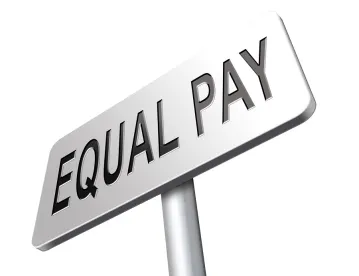Summary
“Key Employment Law Events in 2017 and Beyond” update highlighted the upcoming regulations requiring certain employers to report on the gender pay gap in their workforce (Equality Act 2010 (Gender Pay Gap Information) Regulations 2017) (the Regulations). Under these Regulations, from April 2017, large private and voluntary sector UK employers will be required annually to calculate and publish a range of gender pay information regarding their workforce.
In Depth
Five Things to Know
1. To which companies do the Regulations apply?
The Regulations apply to all private and voluntary sector employers with 250 or more UK employees as of 5 April each year. This is the key “snapshot” date for the purposes of the Regulations.
Employees are to be counted on an entity-by-entity basis, rather than a group-wide basis. This means that groups with multiple employing entities could fall outside the regime if none of their entities have 250 employees.
2. Which employees will count for the 250+ threshold and reporting purposes?
The definition of “employee” for the purposes of the Regulations includes anyone employed under an employment contract, a contract of apprenticeship or a contract personally to do work. Some consultants and those on zero-hours contracts are included.
Note that while partners in traditional partnerships and LLPs are included for calculating the 250+ threshold, they are excluded from the definition of “relevant employees” for the purposes of the reporting obligation.
3. What information needs to be published?
The core obligation is to calculate and publish relevant pay information existing as at the 5 April snapshot date each year.
Employers will have 12 months from 5 April to publish the relevant information on both their own website (where it must remain for at least three years) and a designated government website.
Data for the first snapshot date of 5 April 2017 will, therefore, need to be published by no later than 4 April 2018. Companies should take steps now to assess whether or not the Regulations apply and, if so, prepare to capture the required information existing as of 5 April 2017.
Employers will have to publish a report which provides six key metrics:
-
Mean gender gap based on hourly rates of pay and bonus for relevant employees during their usual pay period
-
Median gender pay gap based on hourly rates of pay and bonus for relevant employees during their usual pay period
-
Mean gender bonus gap (in the 12 months ending on the snapshot date)
-
Median gender bonus gap (in the 12 months ending on the snapshot date)
-
Proportions of male and female relevant employees receiving bonus pay
-
Proportions of male and female relevant employees in the company’s lower, lower middle, upper middle and upper hourly rate quartile pay bands (excluding those receiving reduced pay due to leave)
The reported figures may be supplemented by a narrative which can give, for example, explanations for any pay gap and the steps being taken to close the gap. A director or similar appropriate person must confirm the figures as accurate. It is anticipated that many employers will want to provide some additional explanation and context for the data.
4. What payments must be included in the above calculations?
The gender pay gap and quartile figures are based on the ordinary pay and bonus received by relevant employees in the pay period in which 5 April falls (which, for a monthly paid employee, will be the month of April), distilled into an hourly rate figure.
Ordinary pay includes basic pay, allowances, pay for piecework, and pay for leave and shift premiums, but not pay for overtime, redundancy/termination of employment, or in lieu of leave or benefits of kind.
Bonus pay is construed widely so as to include any remuneration (whether in the form of money, voucher, securities, securities options or interests in securities) relating to profit sharing, productivity, performance, incentive or commission. Where bonus pay is paid in respect of a period which is different from the usual pay period, a pro-rated amount should be included in the calculation.
Any employees on reduced or nil pay as a result of leave (for instance, maternity leave) are excluded for the purposes of calculating the mean and median gender pay gap.
Bonus pay is further analysed on a stand-alone basis in the form of mean and median bonus pay paid to relevant employees, including those on leave, in the 12 months ending with the snapshot date. For year one, therefore, this will capture bonus data reaching back as far as April 2016.
5. What are the consequences for failing to comply with the Regulations?
There are currently no express sanctions for employers failing to comply. Nevertheless, non-compliant employers will risk reputational damage or potential adverse impact on candidate attraction and employee retention. The Government plans to publish tables by sector of employers’ reported pay gaps. There is also a risk of potential employee claims for equal pay and sex discrimination.
Five Practical Things to Do Now
-
Establish whether you are an employer caught by the Regulations and, if so, identify which employees (i) should be included for the purposes of calculating the 250+ threshold (including partners or LLP members), and (ii) are “relevant employees” (excluding partners or LLP members).
-
Determine how each element of remuneration needs to be handled and collate the data for the pay period in which 5 April falls.
-
Draft the report and consider what complementary data and/or narrative might be required to explain the data. Take legal advice to ensure that any preliminary data and discussions about how to capture and analyse the various elements of pay are protected by legal privilege.
-
Nominate a director who will be responsible for approving the figures. Ensure the director (i) understands the obligations under the Regulations and how the figures are calculated, and (ii)contributes to any narrative or complementary data to explain any gender pay gap identified.
-
Consider how to communicate the results to employees. Train key staff (e.g., human resources, directors) on how to respond appropriately to questions from employees about the gender pay gap. Bear in mind your data protection and confidentiality obligations in providing information to employees. Reflect on how to tackle any genuine pay gap, such as through sponsorship, flexible working initiatives, mentoring, return to work programmes and/or education and training of staff.
Cindy LaMontagne contributed to this article.





 />i
/>i
